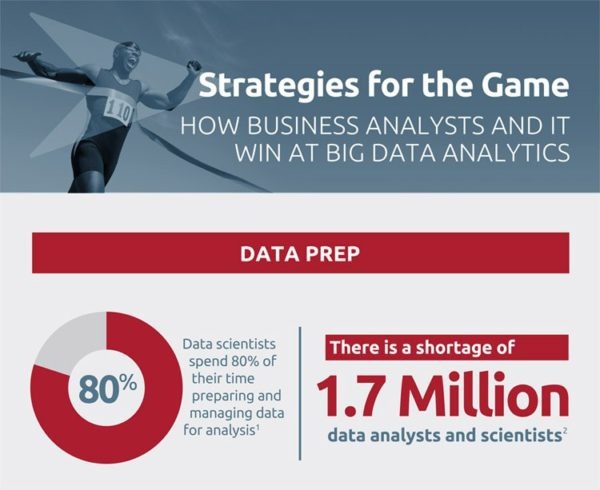 Business analysts are increasingly critical in the modern data-driven economy. They determine market trends, analyze performance data, and even present insights to executives that will help direct the future of the company. And as the world becomes even more data-driven, it becomes vitally important for business and data analysts to have the right data, in the right form, at the right time so they can turn it into insight.
Business analysts are increasingly critical in the modern data-driven economy. They determine market trends, analyze performance data, and even present insights to executives that will help direct the future of the company. And as the world becomes even more data-driven, it becomes vitally important for business and data analysts to have the right data, in the right form, at the right time so they can turn it into insight.
However, chances are good that your business analysts actually spend the bulk of their time focused on data quality. This is a problem because data preparation and management isn’t, and shouldn’t be, your business analysts’ primary responsibility. But, they also don’t need to depend on IT to do it for them either … ideally they should be able to do it themselves without a substantial time commitment. That way they can spend the majority of their time on algorithms and manipulating models to divine insights from clean data.
IT isn’t often much help because they have dozens of other tasks on their list, including additional asks for more granular data. The flood of big data, which so far many companies have managed manually, has thus resulted in a situation where IT exports raw information for business analysts and doesn’t always have the time to ensure the data is cleansed properly. This isn’t anyone’s fault really; manual data preparation can consist of mind-numbing tedium that dominates time IT and business analysts could be using for other work.
That’s why Redpoint’s recent infographic on data quality offers five strategies to help business analysts and IT win at big data analytics, which includes:
- Focusing on data blending – Data is spread across multiple locations in multiple formats, with 92% of organizations noting they have 16 to 20 different data sources. This will only worsen over time, as 95% of companies expect the number of data sources to balloon in the coming year.
- Automating data cleansing – Poor data quality costs organizations between 10% and 20% of their revenue, but more than half of businesses spend more time cleaning data than using it. This presents a problem and is why we recommend automating data cleansing procedures so you can spend more time using your data and driving insight.
- Ensuring high data quality – Data quality must be at a high level to execute on your overall goals; 52% of data scientists said that data quality was their biggest obstacle in 2015 and 87% of data management professionals admitted to putting bad data in their data stores.
I encourage you to download (and share!) our new infographic on data quality to get more tips and improve your data management to succeed in our new data-driven marketplace.

